We took a trip to Florence to rediscover the meaning of craftsmanship and learn how artisans survive in times of two-day delivery and compete with globalized production.
Walk down the right alleyway in Florence can yield a supremely romantic experience: a sartorial older man smoking a Tuscano Garibaldi as he walks by the perfectly patinated facade of a building. The historical architecture and charm of the city make you nostalgic for a time you may not have even been alive for.
Florence is seemingly a victim of low cost airline tourism—one of the world’s beautiful cities filled past capacity with selfie stick swinging travelers, encouraging cheaply produced knockoffs of local crafts and commodifying tradition. Thankfully, the reverence for history, tradition, and craftsmanship cut through most of that noise.
FvF was invited to Florence by A. Lange und Söhne, a prestige watch company founded in 1845. Many of the employees commute from Dresden, dubbed the “Florence on the Elbe,” to the company’s home in Glashütte. Craftsmanship has always been a topic that FvF has examined, and since A. Lange und Söhne are a watch brand focused on handmade quality, it was a great opportunity to explore Florentine Crafts together.
“The historical architecture and charm of the city make you nostalgic for a time you may not have even been alive for.”



The first stop on our tour of Florentine crafts took us to the Galleria Romanelli, one of the longest running sculpture studios in the world. Located in the Oltrarno quarter, it’s just shy of the touristic areas, though an occasional stray backpacker would peer into the front door with a look of wonder. Stepping inside feels like walking into the archives of the Uffizi, with towering sculptures that span centuries—and generations.
“In the late 1800s, Lorenzo Bartolini had many commissions and needed a big space so he came here and began sculpting,” says Raffaello Romanelli current proprietor of the Galleria Romanelli. “One of his pupils was Pascuale Romanelli, my great-great-great-grandfather, and ever since then my family has been sculpting here.” Around Florence, works from the Romanelli family can be found in the Uffizi, the Ponte Vecchio, the Piazza Ognissanti and they have restored some of the iconic sculptures scattered around the city as well. The family has also created works for royalty and art collectors the world over.
Studio Romanelli
Sculpture studio founded in 1860
This space was originally a church before becoming a sculpture studio in 1829.



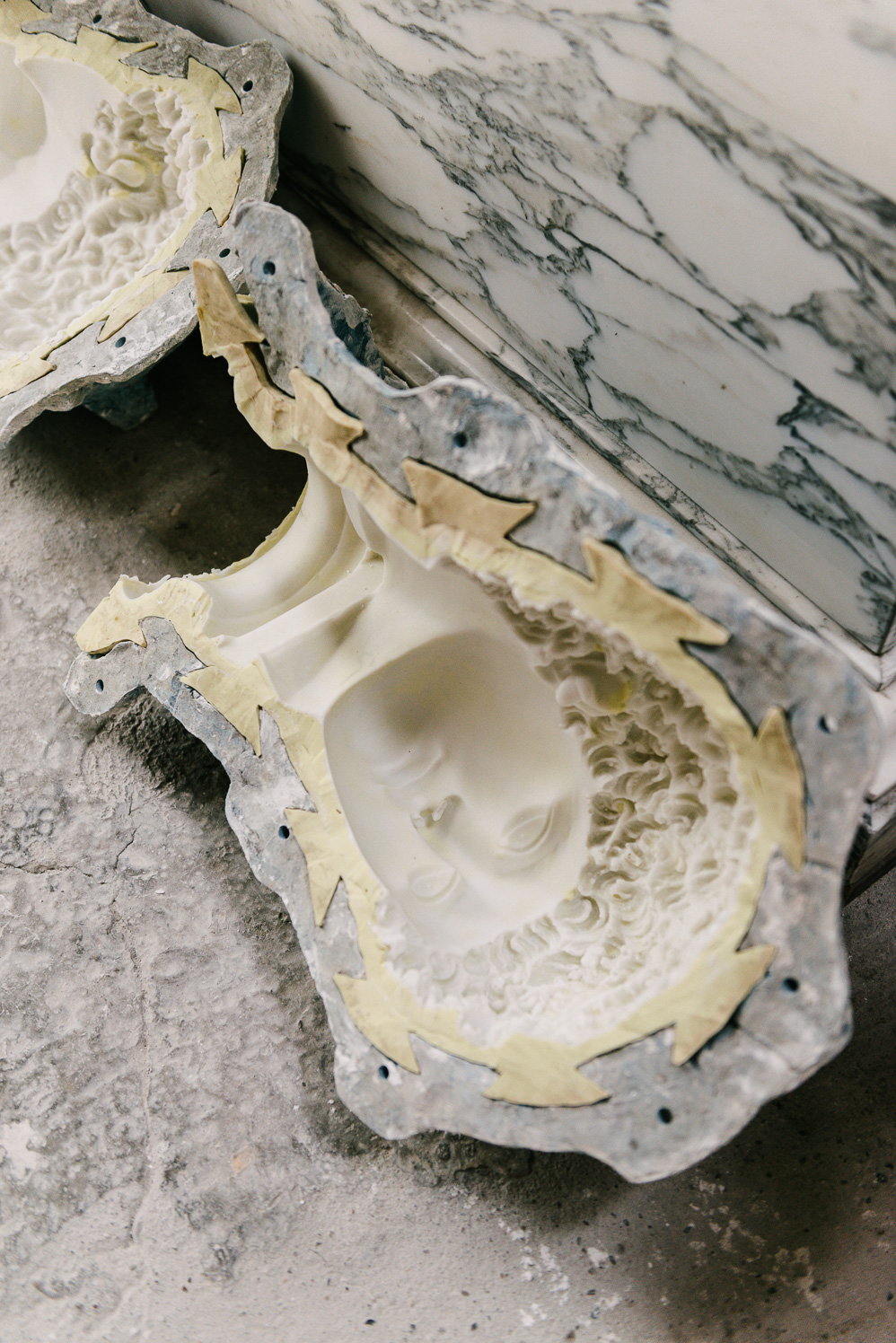

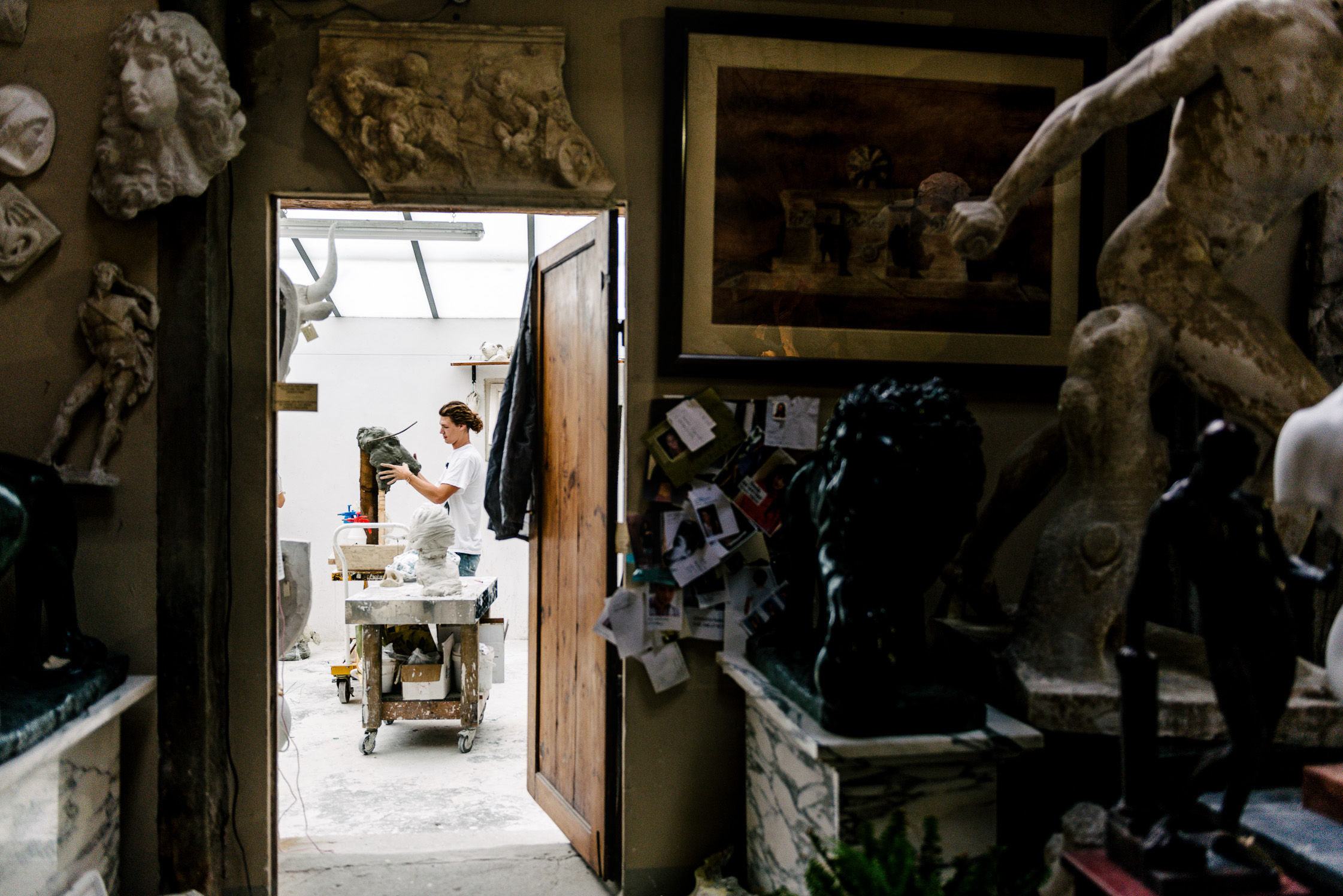

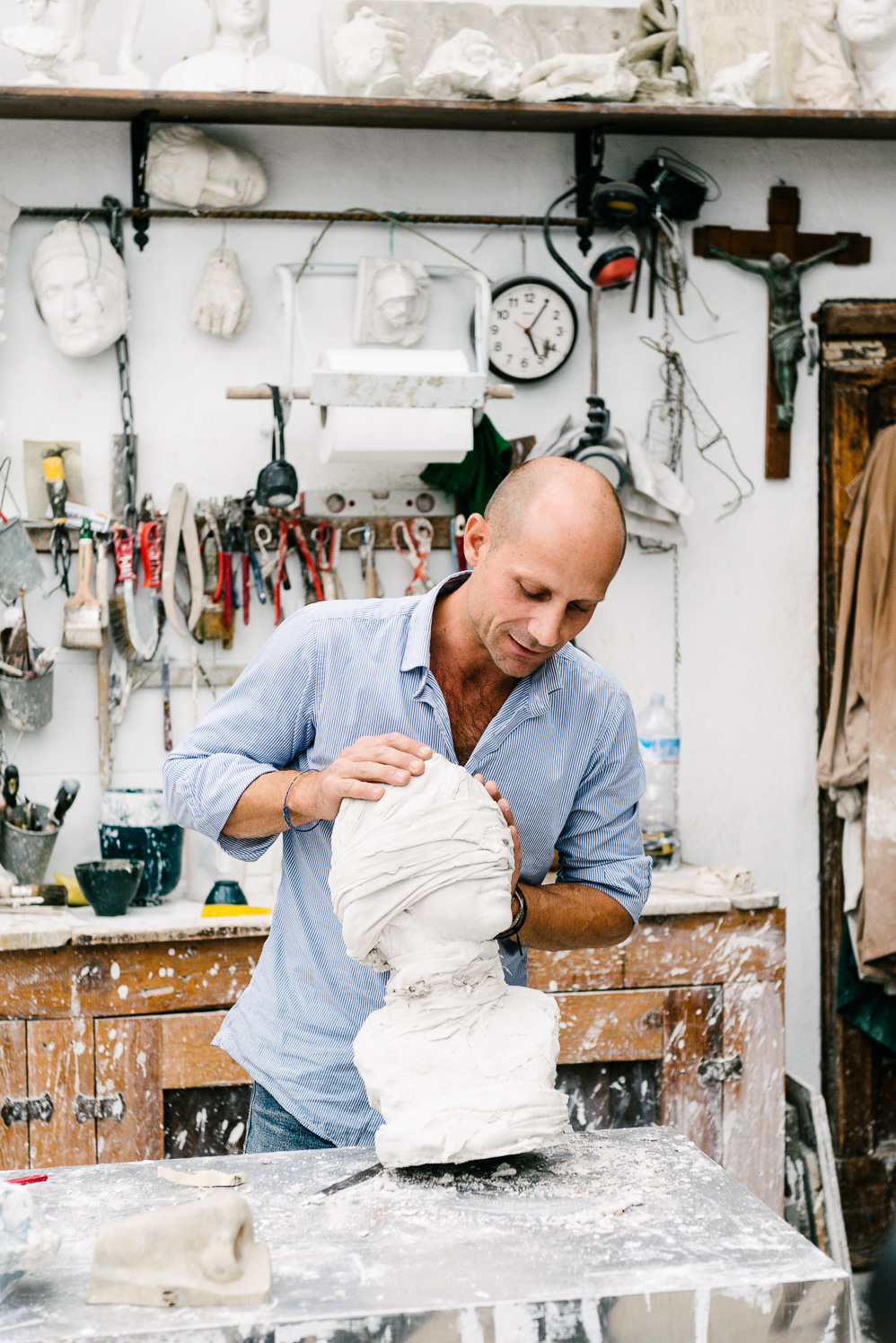




Formerly a 15th century church, the impressive 16-meter-high arched ceiling allowed for Bartolini, and in turn, the Romanelli Family, to create towering sculptures—some of which are still there today. Coming from a family so steeped in tradition, it was only natural for Raffaello to take on the trade and carry the Romanelli torch. Now, the Galleria Romanelli survives on commissions and a catalog of pieces curated by Raffaello, which combines his family’s legacy with a modern sensibility.
The sculpture methods practiced by the Romanelli family have direct lineage back to the contemporaries of Michelangelo, and have been passed down over the years. And Raffaello is spreading the knowledge his family has accumulated over that time, by opening the doors of his sculpture studio to students from around the world. During our tour, students diligently recreated some of the sculptures that populate the studio.



The studio of Lorenzo Conti is located just off the busy pedestrian thoroughfare of Borgo degli Albizi. Outside tourists bustle about, completely unaware of the works that take place inside. Where Raffaello and Galleria Romanelli deal in large swaths of material, and work with the chisel and mallet, Lorenzo reaches instead for the scalpel and probe. Lorenzo Conti is a conservator, specialized in the structural restoration of paintings with damaged canvases.
The work of a conservator—of bringing the past back to life—is a delicate one as it is. Walking a fine line between preserving what is there and recreating what is lost. But the work that Lorenzo does is something else entirely. When paintings arrive in Lorenzo’s studio, the paint may be peeling away from the canvas, or patches of the canvas may be missing entirely.
Studio of Lorenzo Conti
Conservator
Lorenzo Conti is a conservator, specialized in the structural restoration of paintings with damaged canvases.

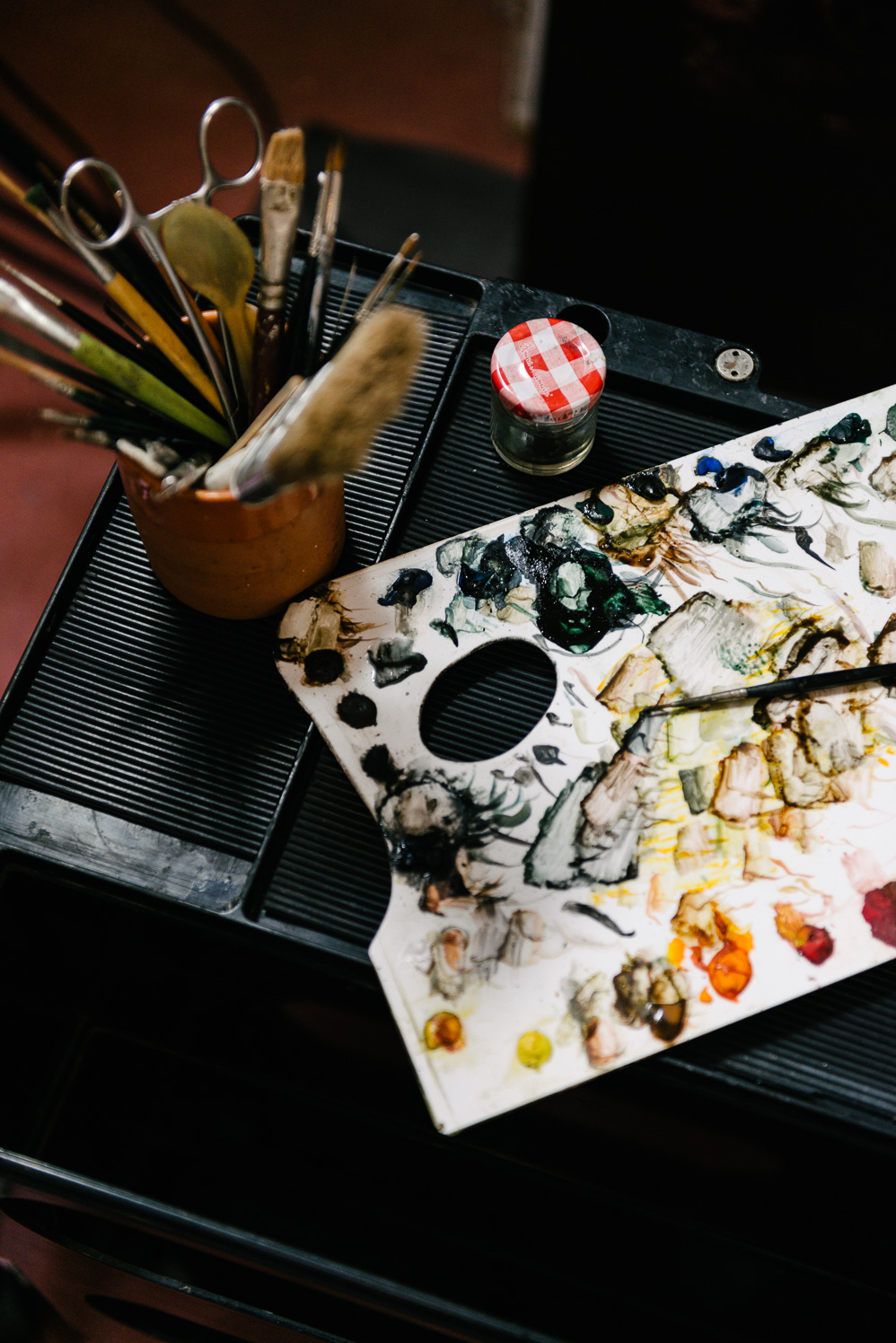







To restore the works, Lorenzo looks to the past—he recreates the materials and process that painters would use to treat their canvases and creates the workspace that other conservators will then paint over. After determining when a painting was first created, he sources blank canvas materials from the era and painstakingly recreates the lost bits of canvas fiber by fiber.
It’s a process that can take months of continuous work, depending on the state of decay, and Lorenzo is one of only a few in the world that practices this specialized work.
The Antinori Winery
The family-run estate with a history of wine production spanning over six centuries
This building represents over 600 years of the Antinori family’s dedication to the craft of wine making.
Our tour of Florentine crafts ended at the breathtaking Antinori Vineyard. A 45-minute drive outside of Florence on a Chianti hillside, the complex is a monument to the Antinori family’s dynastic history of winemaking. Blending the functional aspects of operating a vineyard—an environment that is optimal for the cultivation of grapes as well as the production and storage of wine—with architectural marvel that honors the family’s legacy, the landscape and the history of winemaking in the region.
It looks sort of like the headquarters to a villain in James Bond—with naturally weathered steel forming the skeletal structure of the building, filled in by the red Tuscan tiles that match the color of the soil. The business is certainly deserving of the distinctive architecture: founded in 1385 by Giovanni di Piero Antinori, the family business has been making wine in the region since, as the tenth oldest family-owned business in the world.
The wine produced is highly regarded as some of the finest Chianti one can buy, and with good reason. They have direct access to the knowledge accumulated by 26 generations, filled with many good years and some bad. Standing from the expansive deck overlooking the Tuscan hills, sipping wine from the 2015 yield, the feeling of permanence in the business is tangible.



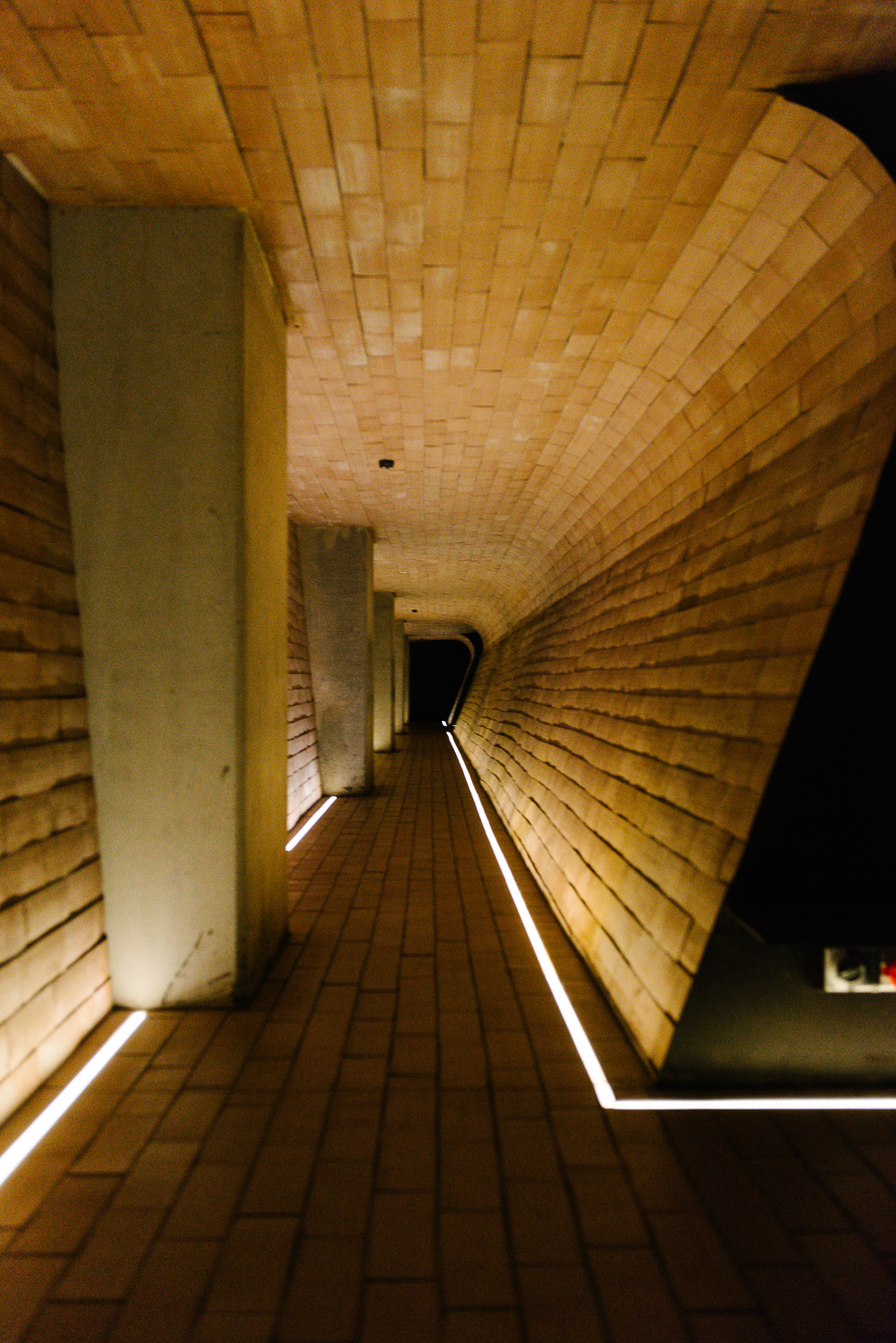




It was at this point in the tour that our hosts from A. Lange & Söhne showed off the level of skill that go into making their watches by demonstrating the enameling process that their limited Complication series watch, the 1815 Rattrapante Perpetual Handwerkskunst undergoes. Watching the craftspeople carefully mix the pigments and spread them across the watch parts was a marvel in itself. The artisans that A. Lange & Söhne brought were right at home, surrounded by the fruits of the Antinori family’s heritage—a meeting of two traditional businesses that pride themselves on the sheer quality of their products.
The color blue took center stage when A. Lange & Söhne’s presented their Blue Series of four timepieces capturing an intense deep-blue hue on their solid-silver dials. The “Lange 1”, “Saxonia”, “Lange 1 Daymatic” and “Saxonia Automatic” models—the first two manually wound and the latter two self-winding—are masterpieces of classical elegance, which derive their appeal from the striking contrast between materials and colors.



The word ‘craft’ has been tacked onto products to invoke a feeling of authenticity and artisanship: craft beer, craft coffee, craft leather aprons; all targeted at consumers who want to feel as though they are somehow circumventing consumer culture and buying things that matter. Though these things at times are representative of a new and exciting piece of culture, for the craftsmen we met in Florence, authenticity and artisanship are their pedigree.
This piece was made possible by A. Lange und Söhne, based in Glashütte, Germany since 1845. It may seem a bit odd for a German watch company to bring us out to Florence, but the company can trace its origins to the Saxon capital of Dresden, “The Florence on the Elbe.” The trip was a worthwhile experience for both A. Lange und Söhne and FvF to explore craftsmanship—we both had things to learn from the Florentine masters that we met along the way. But it was also an opportunity for A. Lange und Söhne to unveil their handcrafted timepieces and display their mastery of watchmaking.

